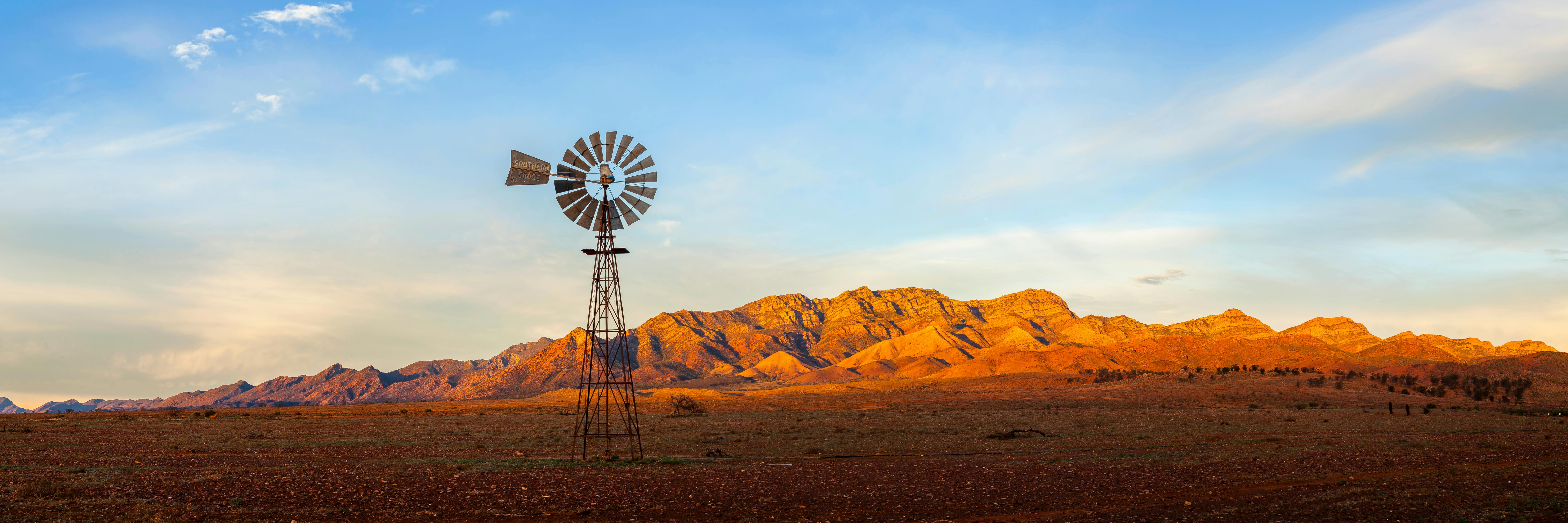Supporting the transition to net-zero
What is net zero?
‘Net zero emissions’ refers to achieving an overall balance between the greenhouse gas emissions produced and those taken out of the atmosphere, so no more greenhouse gas is added to the atmosphere in any given year than is taken out (Climate Council.org.au).
Why is it important to get to net zero?
Greenhouse gas emissions trap warmth in our atmosphere and are a significant contributor to climate change. To avoid the worst impacts of climate change we need to keep the global temperature increase to 1.5o C above pre-industrial levels. It is currently at 1.1o C above these levels and as anthropogenic (human-caused) greenhouse gas emissions continue, so we expect temperatures to continue to increase.
How can we get to net zero?
Energy sources such as coal, gas and oil create around three quarters of global anthropogenic greenhouse gas emissions, so if we can replace these with renewable energy sources, such as wind or solar, this will help reduce these emissions. We can then convert this renewable energy into electricity or into green hydrogen (see below) allowing us to capture, transport and store renewable energy so it can be used in place of oil, coal and gas.
We are already seeing an increase in the popularity of electric cars, with the electricity they use provided by greener energy sources. However, there are many more opportunities to replace non-renewable energy sources with more sustainable alternatives, and green economies need to be supported as they work to reduce emissions and avoid further climate change.
For more information about South Australia’s role more generally in the transition to a green economy see here
How will the Northern Water Supply project support the transition to net zero?
Supporting green hydrogen production
Hydrogen is produced by splitting water into hydrogen and oxygen. If the power used to produce this split is sourced from renewable energy, then it is called green hydrogen. This green hydrogen can then be used to replace fossil fuels currently used in industries which can’t simply switch to electricity, such as long-distance heavy transport and manufacturing, thereby reducing their emissions.
As well as being a fuel, green hydrogen can also be used to generate electricity. Hydrogen plants are often designed to make hydrogen while there is excess energy being generated from renewable resources. This hydrogen is then used to generate electricity when renewable sources are not generating, improving stability in the electricity grid for homes and businesses. In this way, hydrogen enables us to capture and store energy for later use like a battery does.
Green hydrogen production in South Australia requires access to new and high quality water supplies. The area around Whyalla has been identified as a world class site for hydrogen production and the Northern Water Supply (NWS) project is intending to provide a sustainable source of water to this emerging green industry in the Upper Spencer Gulf.
Enabling mining of copper reserves
Copper is vital to achieving net zero. It is used in electric vehicles, batteries, and charging stations as well as being critical for the development of wind and solar power generation. There is no known substitute for copper, and supplies are low across the world due to the increase in demand over recent years. S&P Global* have stated that Unless massive new (copper) supply comes online in a timely way, the goal of Net-Zero Emissions by 2050 will be short-circuited and remain out of reach.
South Australia is home to Olympic Dam, which is the fourth largest copper resource in the world, in addition to four of Australia’s most significant copper discoveries in the past 10 years, three of which are in the Upper Spencer Gulf/Far North region.
The extraction of copper from the far north of South Australia is currently limited by, amongst other things, access to water. Not only is water required for a range of activities during the mining process itself, it is also required to support the accommodation for mining staff to be able to work in these remote areas.
The water currently used for copper extraction is mostly sourced from groundwater resources, including the Great Artesian Basin and there are concerns over the sustainability of these sources and the cultural and environmental implications of its use.
The NWS project will provide a new water source for this key industry, further supporting regional development and crucially, Australia’s work towards net zero.
Providing support for new renewable energy generation in the Whyalla area
The NWS project is committed to being powered by renewable energy. As such NWS will require a reliable, secure and local source of this energy. This requirement will support the case for new renewable energy generation in the region, increasing regional job options for young people in sustainable industries.
If you would like any more information on how NWS will contribute to the net zero transition, please call our team on (08) 8429 4650 or e-mail us at northernwatersupply@sa.gov.au
*S&P Global, 2022, The Future of Copper: will the looming gap short-circuit the energy transition p9.
Consultation has concluded. Thanks for your contributions.



